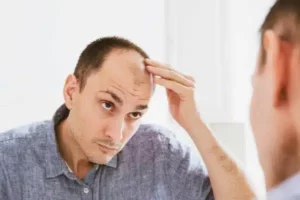
Why Do Hair Transplants Provide Better Solutions Than Medications?
Though some topical treatments can bolster hair regrowth somewhat, they cannot halt the genetic and hormonal processes causing follicles to shrink and die over time. Tablets like finasteride may slow future hair loss but come with concerning sexual side effects. Hair transplantation is the only permanent, natural-looking way to reinstate a full head of hair resistant to future balding. During the procedure, your cosmetic surgeon will graft healthy hair from thicker areas of your scalp into thinning patches. Transplanted follicles are genetically resistant to the balding process, so they will continue flourishing in their new location.
What Are the Different Hair Transplant Techniques?
Follicular Unit Extraction (FUE) and Follicular Unit Transplantation (FUT) are two methods our surgeon may utilize. With FUE, individual hair grafts are extracted directly from your scalp using a specialized punch tool. This leaves only tiny dotted scars hidden by surrounding hairs. FUT involves removing a slender strip of skin from the back of your scalp and then dissecting it into grafts under a microscope. The removal site leaves a fine linear scar easily concealed by longer surrounding hairs. Your doctor will recommend the best technique based on your goals, hair characteristics, scalp elasticity, and other factors.
What Should I Expect During My Recovery Period?
Recovery takes about two weeks before you can resume normal activities. Swelling, crusting, and shedding of transplanted grafts are all normal during the first 10 days post-op. Once securely re-established in their new scalp homes around three months following surgery, relocated follicles will grow normally. Six to nine months later, your results should fully unveil your new thicker, fuller hairstyle engineered to complement your facial features beautifully.
Am I A Candidate for Restorative Hair Transplant Surgery?
If you are dealing with a receding hairline or you have bald patches, hair transplant surgery may be for you. Schedule a consultation with our Houston hair restoration specialist Dr. Alfonso Barrera, by calling (713) 468-5200 today. Together, we will review your hair loss progression, discuss transplant methods like FUE or FUT to meet your aesthetic goals, and ensure phenomenal, natural-looking outcomes. Take control and regain a head of hair reflecting the real you again.



Comments are closed.